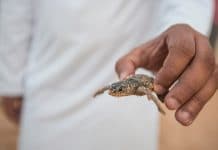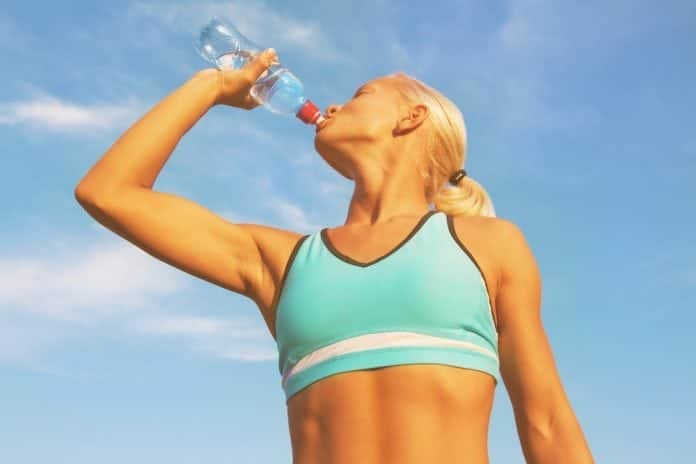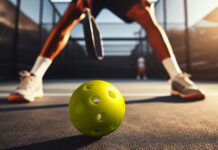The summer of 2024 is here, and residents of Bergen County are making the most of the sunny weather by spending more time outside. However, it’s important to be mindful of the increased risk of accidents, injuries, and heat-related health problems that come with this season. To stay safe and healthy, here are some summer safety tips to keep in mind.
Summer Recreation and Physical Activities: Don’t Overdo It!

We’re all anxious to get out there and enjoy the summer of 2024 for all it has to offer. The Association of New Jersey Chiropractors stresses that we might all be wise to avoid overdoing things in the beginning; warm up with a brisk walk, jumping jacks, or a slow jog for sports activities. A light warm-up will get the blood pumping and warm up your muscles.
While stretching for any activity, breathe in and out slowly and rhythmically; do not bounce or jerk your body, and stretch as far and as comfortably as you can. Do not follow the no pain, no gain rule. Stretching should not be painful. Depending on your lifestyle, stretching needs will vary.
If you are working in the garden, bend with your knees, not your back, and use your arms and legs. The back, upper legs, shoulders, and wrists are all major muscle groups affected when using your green thumb.
A warm-up and cool-down period are as important in gardening as it is for strenuous sporting activity. Performing simple stretches during these periods will help alleviate injuries, pain, and stiffness.
Always incorporate breaks while you do your task. To avoid injuries, stop the activity when fatigue starts to set in, and know your limits!
Summer-Related Injuries and Hazards

“Swimming, biking, and other summer sports are all great activities that offer exercise and other health benefits,” said Dr. Karen Kepler of Kessler Institute for Rehabilitation. “But studies show that the potential for sprains, strains and broken bones, as well as more serious brain and spinal cord injuries, increases during the summer months. Many of these injuries can be attributed to the simple fact that more people are outdoors doing more things: whether it’s traveling to the beach, lake, or pool, going boating, pursuing more extreme hiking and mountain biking, or just playing at the local playground. And what can make matters worse are the high temperatures and humidity levels that can result in heatstroke and other heat-related illnesses.”
Injuries related to leisure activities like sports, yard work, and home improvements typically increase over the summer. By wearing the appropriate equipment, such as a helmet, eye protection, or knee and elbow pads, children and adults may avoid injuries or lessen the severity of accidents.
Children are at particular risk. For example, nearly 40 percent of playground-related injuries occur between May and September when children are out of school, spending more time outdoors, and often without adequate supervision. It is estimated that this summer, children will be rushed to emergency departments nearly 3 million times for serious injuries, and more than 2,500 children will lose their lives due to an unintentional injury, according to a recent National Safe Kids Campaigns study.
To help minimize the risk of injury, Kessler Institute, a national leader in the field of physical medicine and rehabilitation, offers the following summer safety tips for children and adults:
● By the water: Always check the depth of the water before entering, whether you’re at a pool, lake, or beach. If at the ocean, watch for sand bars and changing currents or riptides. Be extra cautious if diving and never dive into an above-ground pool. Know your abilities and limits and always swim with another person. It’s best to swim in designated areas where lifeguards are present.
● On wheels: Always wear a helmet when cycling. Studies have found that this can decrease the likelihood of a serious head injury by up to 90 percent. Chin straps should be secure and tight enough to only allow one finger between strap and chin and should be adjusted to keep the helmet over the forehead. Make sure the bicycle is the proper size for the individual and that the tires are properly inflated. In addition, skateboarders and rollerbladers should wear knee and elbow pads to avoid wrist fractures and other injuries.
● At Play: A parent or other adult should check swings, slides, and other equipment to ensure it is in good condition and that children cannot reach any moving parts that might pinch or trap a body part. The protective surface of the playground should be constructed of rubber, sand, or other soft materials that can reduce the risk of injury in the event of a fall. Children should wear sneakers or other well-fitting closed-toed shoes rather than sandals or flip-flops; hats, shirts, and other garments should be free of ties or strings that can get caught on equipment. Be aware, too, that on hot, sunny days, playground equipment can easily become warm enough to cause serious burns.
Cover trampoline springs with shock-absorbing pads and use a safety net. Make sure your trampoline is not near any trees or other structures and only allow one person on the trampoline at a time. Supervise all jumping activities and create a “no somersaults” rule to prevent serious head and neck injuries. Keep kids under six off of full-sized trampolines.
● In the Heat: Staying hydrated is critical in helping to reduce the risk of a heat-related illness. Drink plenty of water or sports drinks with electrolytes and, if possible, stay in the shade or an air-conditioned place during the hottest part of the day. Symptoms of dehydration include dizziness, headache, muscle cramping, dry mouth or thirst, and fatigue.
Dehydration can often lead to heat cramps, which typically affect the muscles in the legs, arms, or midsection, and heat exhaustion, which can cause profuse sweating, vomiting, headaches, and muscle spasms. Most serious, however, is heatstroke, which occurs when the body is unable to cool itself adequately. Heatstroke, often characterized by a lack of sweating, elevated temperature, confusion, and other mental changes, is a medical emergency and can be fatal if not treated promptly. Note that children are more susceptible to heat-related illnesses because their central nervous system, which regulates body temperature, is not fully developed.
Risks and Warning Signs of Heat-Related Conditions

Heat Cramps: Heat cramps usually affect people who sweat a lot during strenuous physical activity. Heat cramps are muscle pains or spasms that typically occur in the abdomen, arms, or legs.
Heat Exhaustion: Symptoms of heat exhaustion include heavy sweating, muscle or heat cramps, headaches, nausea, vomiting, or fainting. Victims may also feel tired, dizzy, or weak.
Heatstroke: Heatstroke can cause disability or death if not treated immediately. Victims may appear confused, have red, hot, and dry skin, a rapid, strong pulse, a throbbing headache, or lose consciousness. Other symptoms include an extremely high body temperature, above 103°F, dizziness, or nausea.
Avoid dehydration with proper hydration. 8 cups of water a day is a general recommendation. High temperature and athletic activity can increase this to a cup every 20 minutes. Have a low-sugar sports drink for activities greater than an hour to replace electrolytes. If you’re thirsty, then you are in the early stages of dehydration. Your body’s water reserves can run dangerously low during an active day outdoors, which is why it is so important to remember to replenish that lost liquid. Grab a bottle of water, or a sports drink even if you aren’t thirsty. Avoid caffeinated beverages and alcohol, which contribute to dehydration.
Because children are at higher risks for heat-related illnesses, they must stay hydrated in the summer heat. They should drink more fluids regardless of the level of their activities. Avoid giving children icy drinks as they can cause stomach cramps, and stay away from sugary beverages, too. Water is always your best option.
Avoid heat illness. This is when the body temperature increases quicker than your body can decrease it. Fatigue, muscle cramps, and lightheadedness are signs of mild heat illness. Wear loose, light-colored clothing and avoid strenuous outdoor activity between 10:00 am-2:00 pm, when the temperature is greater than 82 degrees and when the humidity is high.
“The majority of heat-related illnesses and summer injuries can be minimized by paying extra attention to weather conditions, as well as the level of physical activity. Similarly, both adults and children need to be aware of basic safety precautions when swimming, biking, playing, or otherwise enjoying outdoor activities at home or on vacation,” suggests Dr. Kepler.
Have Fun in the Sun…But Be Responsible!
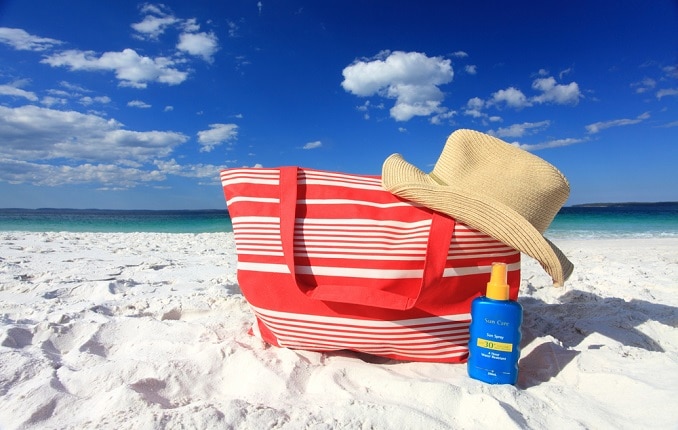
According to recent projections from the Cancer Statistics Center at the American Cancer Society, 2,570 new melanoma cases (skin cancer) may be diagnosed in New Jersey this year. According to Regional Cancer Care Associates in Hackensack, New Jersey, skin cancer is largely caused by ultraviolet (UV) radiation from the sun or tanning beds.
While more and more people are mindful of the careful application of sunscreen these days, there are things you should know about the proper use of sunscreen before heading out to the beach, pool, park, or any outdoor activity.
The Proper Use of Sunscreen for Children

Tenafly Pediatrics suggests that parents use sunscreens on children that are labeled “broad-spectrum” with a sun protection factor (SPF) of 15 or higher.
There has been a growing trend toward using “homemade” sunscreen recipes featuring “natural” ingredients. But a recent study found that 68% of these recipes did not do a good job of protecting people from UV radiation. Sunscreen pills can be found in drugstore vitamin aisles and online and claim to provide “natural” sun protection. However, the FDA recently warned four companies to remove unproven claims that their pills prevent sunburn.
According to Tenafly Pediatrics, the best way to protect children from the sun is to apply one ounce of sunscreen on exposed skin and face. Smaller children may require less, but most people do not use enough sunscreen. When using spray sunscreen, it is best to make four passes back and forth on each skin area and then rub the spray evenly. Never spray directly on the face — spray it on your hands first and then rub it onto your child’s face.
Apply sunscreen before children go outside and reapply every two hours or after swimming, towel drying, or sweating.
Summer Sun Safety for Adults
Too much sun exposure can leave the skin sunburned and irritated. Apply sunscreen with an SPF [sun protection factor] of 30 or higher every two hours and immediately after swimming or sweating excessively. Lightweight, breathable long-sleeved shirts and pants can also help protect the skin from the sun’s ultraviolet rays.
Bug Off! Avoiding and Treating Insect Bites
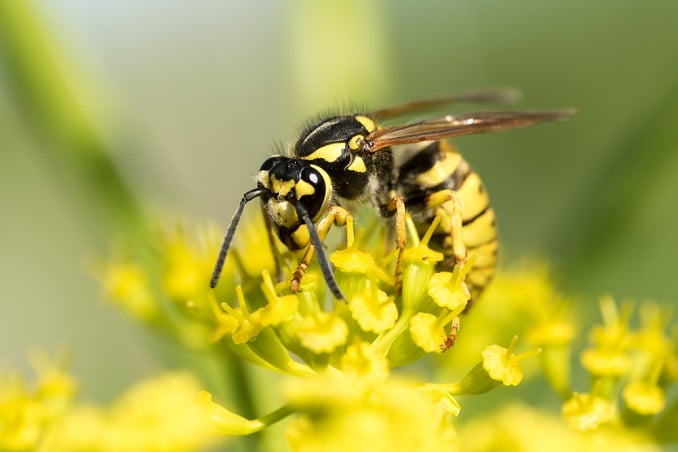
Whether you are allergic or not, summer insect bites can be quite frustrating. Arm yourself by using a product containing the ingredient DEET or Picaridin. If you or someone you know suffers from a bug bite, hydrocortisone cream can provide itch relief. Remember: any rash accompanied by a sore throat or fever could signal a serious infection and should be examined by a healthcare professional immediately.
In the North Jersey area, we have to worry mostly about stinging insects such as wasps and bees, biting insects such as mosquitoes, and insects that can transmit diseases – again, mosquitoes as well as ticks. To decrease the risk of being stung by a wasp, avoid dressing in bright colors or florals and avoid scented products such as soaps, hair sprays, and perfumes. If you are stung, and the stinger is still present, it can be removed by gently scraping with a hard flat object such as a credit card. The pain can be minimized with ice or cool compresses.
More About Ticks

Ticks tend to hide in tall grass and forested areas where deer are present. To minimize the risk of a bite that could transmit Lyme disease, wear long pants, long sleeves, and socks in these areas. Additionally, insect repellents should be used.
If children are outside in the grass or have gone hiking, it is a good idea to check their skin at the end of the day for attached ticks. Though sometimes they hide in plain sight, it’s a good idea to check along the hairline, behind the ears, and around the belly button for ticks. If one is found, it can be removed by using a pair of tweezers to grab the tick by the proboscis (mouth), where it feeds through the skin and then gently pull straight out.
As per the CDC, ticks need to be attached for 36-48 hours before disease transmission occurs, so if the tick is removed promptly, there is little concern for Lyme disease (even if the tick is not removed in its entirety).
Beware Leaves of Three! Poison Oak, Ivy, and Sumac
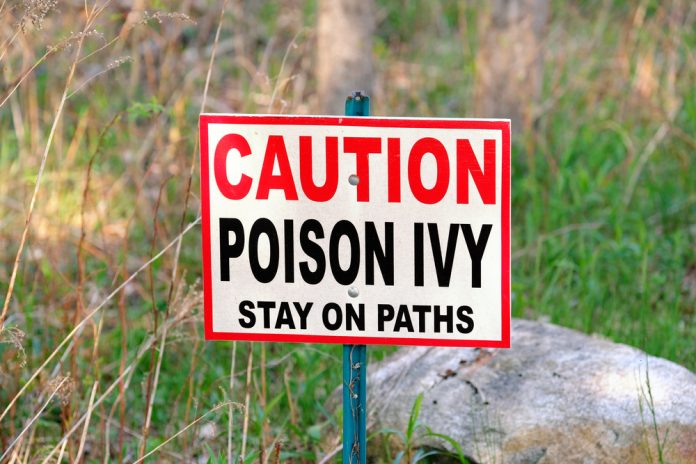
Poison oak, ivy, and sumac are all known to cause an allergic, itchy reaction when exposed to the skin. Though these itchy red bumps or blisters cannot be cured, there are ways to lessen the discomfort they inflict while they heal, such as cool showers and over-the-counter calamine lotions. Take the time to educate yourself and your family about the potential plant dangers in your area and what should be avoided.
Tips and Myths About Poison Ivy
Poison oak, poison sumac or poison ivy can all lead to skin rashes. Folks picnicking or hiking through parks and open spaces, this summer should beware of certain plants.
This is true for poison ivy and poison oak, each of which has three leaves in a single cluster. On the other hand, poison sumac has seven to 13 leaves on a branch.
Some people are sensitive to the point where their conditions can flare up in simple contact with grass or other plants. As a general rule, wear long pants and long sleeves for protection to lessen your chances of getting a reaction to outdoor plants, especially poison ivy, poison oak or poison sumac.
The following steps may help to reduce symptoms of atopic dermatitis and hives, or even avoid them altogether:
- Beware of the sun. Hives can be triggered by heat or sweat. Drink plenty of fluids, avoid becoming too hot and wear sunscreen.
- Be prepared. Eczema can worsen in the summer, especially with excess sweating. Have a skin care treatment plan. This may include having mild bathing products on hand.
Unlike pollen or bee sting exposure that can cause an immediate reaction—sometimes within minutes or seconds of exposure—poison ivy allergy occurs through the T-cell immune system and can manifest days after exposure. There are several myths associated with poison ivy dermatitis:
Myth 1: Poison ivy rash is contagious.
False: Poison Ivy is not contagious, and the rash only spreads if you spread the oil (urushiol) from the plant. Urushiol is a sticky, resin-like substance that oozes from the plant, including its leaves.
Myth 2: Poison ivy cannot be transmitted from dead plants.
False: Only 1 nanogram (billionth of a gram) of urushiol oil is needed to cause a rash. It can stay active on any surface, including dead plants, for as long as five years. For example, a person can get poison ivy from their pet dog that has been running in the backyard or woods and has oil on its coat. That oil can be transmitted by petting the dog.
Myth 3: Breaking the blisters of poison ivy dermatitis releases urushiol oil that can spread the rash.
False: However, open blisters or vesicles may become infected, leading to scarring of the skin.
Myth 4: A person can become immune (desensitized) when exposed multiple times to poison ivy.
False: Some people seem not to react to poison ivy–at least not on first exposure. It may take longer than 2-3 days for the immune response to generate dermatitis that occurs, sometimes as much as 7-10 days. Over 90% of the U.S. population is sensitive to urushiol oil. The greater the exposure to urushiol oil, the more likely it is for a person to develop a reaction to poison ivy.
Swimming Pool Safety
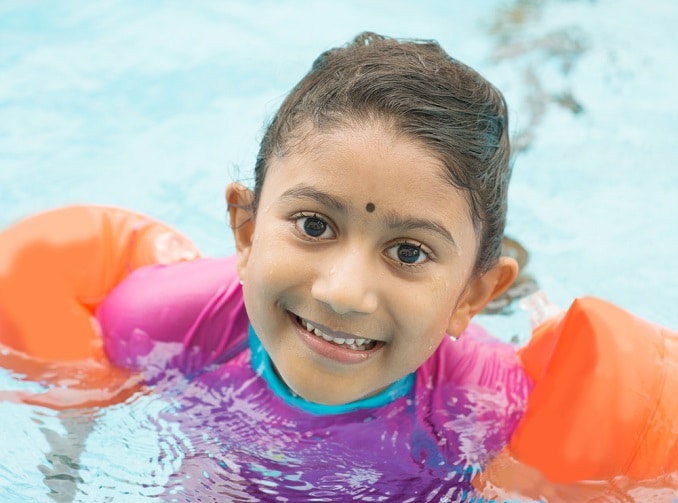
Avoid potential pool or hot tub tragedies by installing barriers, door, and pool alarms. To prevent drowning, never leave children unattended and enroll them in water safety and swim classes. Also, remember to store chemicals out of reach of children.
What is dry drowning? Tenafly Pediatrics video explains.
Gas Grilling Safety
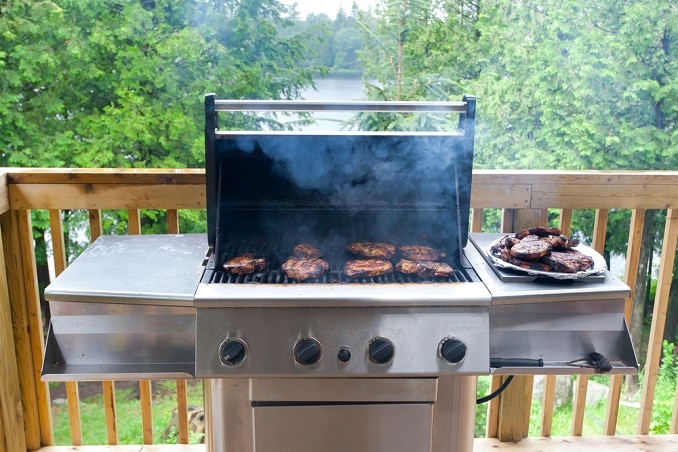
When cooking outdoors, it is important to check gas grill equipment to stop a possible gas leak before it starts. Ensure air tubes that lead into the burners are not blocked by food, grease, or bugs. Inspect the grill hose for holes, cracks, or wear and tear. Do not turn on the gas or attempt to light the grill if you spot any damage and replace faulty parts before use.
Summer Road Trips: Are Your Tires Safe?

There’s a lot to think about when you’re planning a summer day trip or vacation, including money, accommodations, scheduling, keeping the kids occupied in the car…but one thing you definitely should not neglect in those plans is your tires.
Summer road trips are hard on tires. You have to figure you’re in a car that’s likely loaded to the gills, driving for hours and hours to get to your destination in 90-plus-degree weather. That’s a good way to end up with overheated tires, and heat is the enemy of even the best tires.
Here are a few things to consider from the ETD Discount Tire Center Car Care & Safety Blog before you load up the car and get going:
Tire Inflation. Did you know that underinflated tires cost you money in terms of fuel economy? According to the U.S. Department of Energy, studies show every 1-psi drop in tire pressure costs you 0.4 percent of your gas mileage. Rubber is a porous material, and tires will lose that much air pressure every month…so you can see how, left unchecked, it wouldn’t take long for underinflated tires to cost you one or two MPGs. Think about the last time you rode a bicycle with underinflated tires and how it felt like you were riding through wet sand…that’s what you’re doing to your car with underinflated tires. Modern tire designs won’t deform at the bottom until they’re drastically low on air, so don’t rely on appearances to tell you if they’re low. Get a good quality tire gauge and check the inflation of all four tires while they’re cold. If you’re in doubt about the proper inflation level, look for a manufacturer’s sticker on the inside of the driver’s door, the doorpost, inside the gas filler door, or under the hood.
Tire Rotation
Due to weight distribution, braking and steering function, and other factors, tires tend to wear in certain patterns when they’re left in the same position on the vehicle for too many miles. Regular tire rotations are one of the best ways to prevent that from happening. Tire rotations will make tires wear more evenly and enhance a vehicle’s ride, handling and drivability. That also comes out to longer service life for all four tires; in fact, new tire warranties call for tire rotations at specified intervals. Considering that tires should be rotated about every 5,000 miles or so, it’s a good idea to schedule tire rotation at the same time you have your oil changes done.
Wheel Alignment
Even with careful driving, your car will absorb jolts from potholes and road irregularities. Over time, that normal wear and tear will knock your front end out of spec. When your wheels are out of alignment, your tires will wear unevenly as one wheel tries to push or pull the car in a different direction. That drag and friction will cause the rubber to “scrub” from the tires. In addition, a car that needs an alignment will constantly “pull” to one side or another and use more fuel. Let go of the wheel briefly — does your car want to head into the other lane or toward the ditch? Do you have to hold the steering wheel off-center to maintain a straight line down the highway? Better make an appointment for a wheel alignment.
Have a safe and happy summer season! You deserve it!
25 Great Places to Visit in Bergen County in 2024! Fun Things to Do and Points of Interest!






